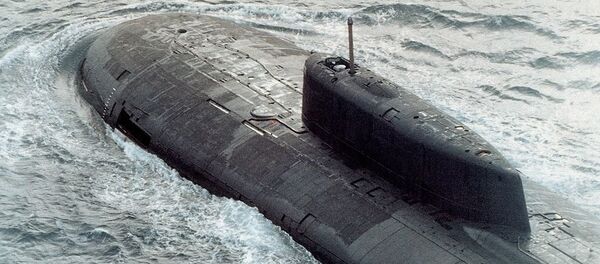At the moment, the Krasnoyarsk Voronezh-DM complex is already operating in test mode. However, observers say its future potential is even more significant.
Reporting to the defense minister during Shoigu's visit to the region on Tuesday, Aerospace Defense Forces Commander Lt.-Gen. Alexander Golovko said that "as part of combat alert duty in 2016, [Russia's] missile warning system, specialized means of space control and anti-missile defense detected over 40 launches of foreign and domestic ballistic missiles and space rockets."
Commenting on the special importance of the Yeniseysk system in an article for RIA Novosti, military analyst Andrei Kotz wrote that at the moment, Russia is rushing to restore and surpass its Soviet-era missile early warning capabilities.
The Yeniseysk complex is a Voronezh-DM system, works in the decimeter range, and can simultaneously track up to 500 objects at a range of up to 10,000 km. It can detect all ballistic, space-based and air-based objects up to 6,000 km over the horizon, or 8,000 km vertically, thereby covering near space. The first station of this modular radar type was introduced in 2006.
Speaking to RIA Novosti, retired air defense officer Mikhail Khodarenok explained that the Voronezh radar system is "designed to detect ballistic missiles and their warheads over the radar horizon."
"They work in automatic mode, operating according to a special program for the observation of space, and have a very high probability of detecting targets soon after launch. The information from the systems is immediately transferred to a command post near Solnechnogorsk [a town in the Moscow region]. There, the data is processed and analyzed, after which it is sent to General Headquarters, which decides what to do next. If a mass launch is discovered, the most likely decision is to launch a counter-missile or missile counterattack. The entire process takes only a matter of minutes."
Khodarenok explained that Voronezh radars are able to not only pinpoint a ballistic missile target, but also instantly calculate its flight trajectory, and the time and location where its warhead(s) will fall. In addition, the radar systems serve the valuable peacetime role of monitoring and identification of space junk, including hundreds of possibly dangerous objects, from dead satellites, to rocket boosters, and other trash.
The retired officer noted that the Russian radar operators carefully document this space junk, and add it to special catalogues to distinguish it from ICBMs entering the atmosphere. To date, only Russia and the United States have this capability.
"I am referring about the northern part of the Pacific Ocean and part of Alaska. In the event of full-scale nuclear war, the missile submarines of the likely enemy would have the opportunity to stage attacks on our cities and military targets from these areas, with our systems detecting these launches too late," he added.
"This direction was supposed to be covered by a Daryal-U type radar, which was being built outside Yeniseysk. However, in 1987, Mikhail Gorbachev, succumbing to pressure from the US, suspended the project. In 1989, the project was dismantled, at 90% completion. The 'Gorbachev gap' remained open for 28 years."
Later this year, thanks to the Voronezh radar system, the gap will finally be closed for good.



